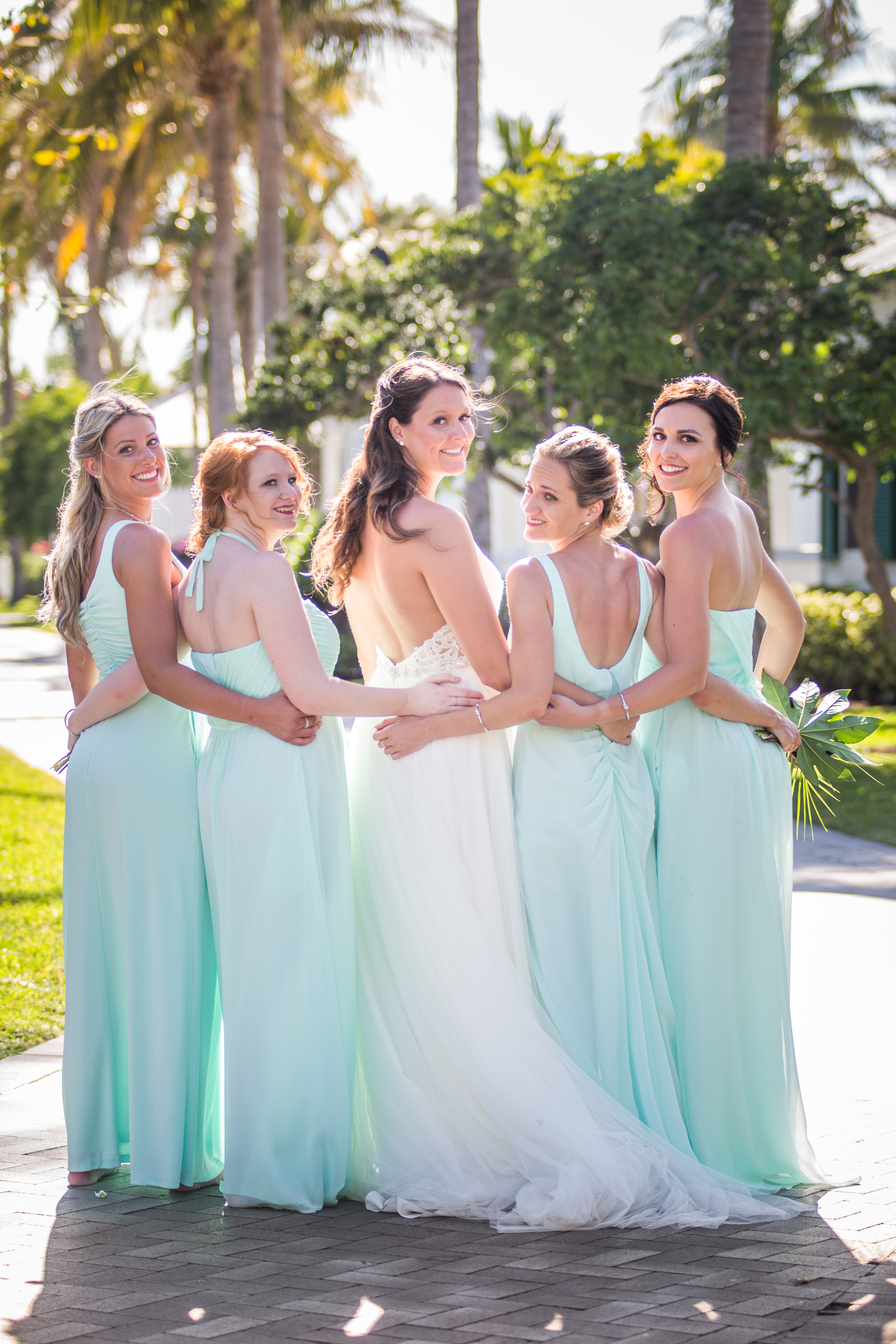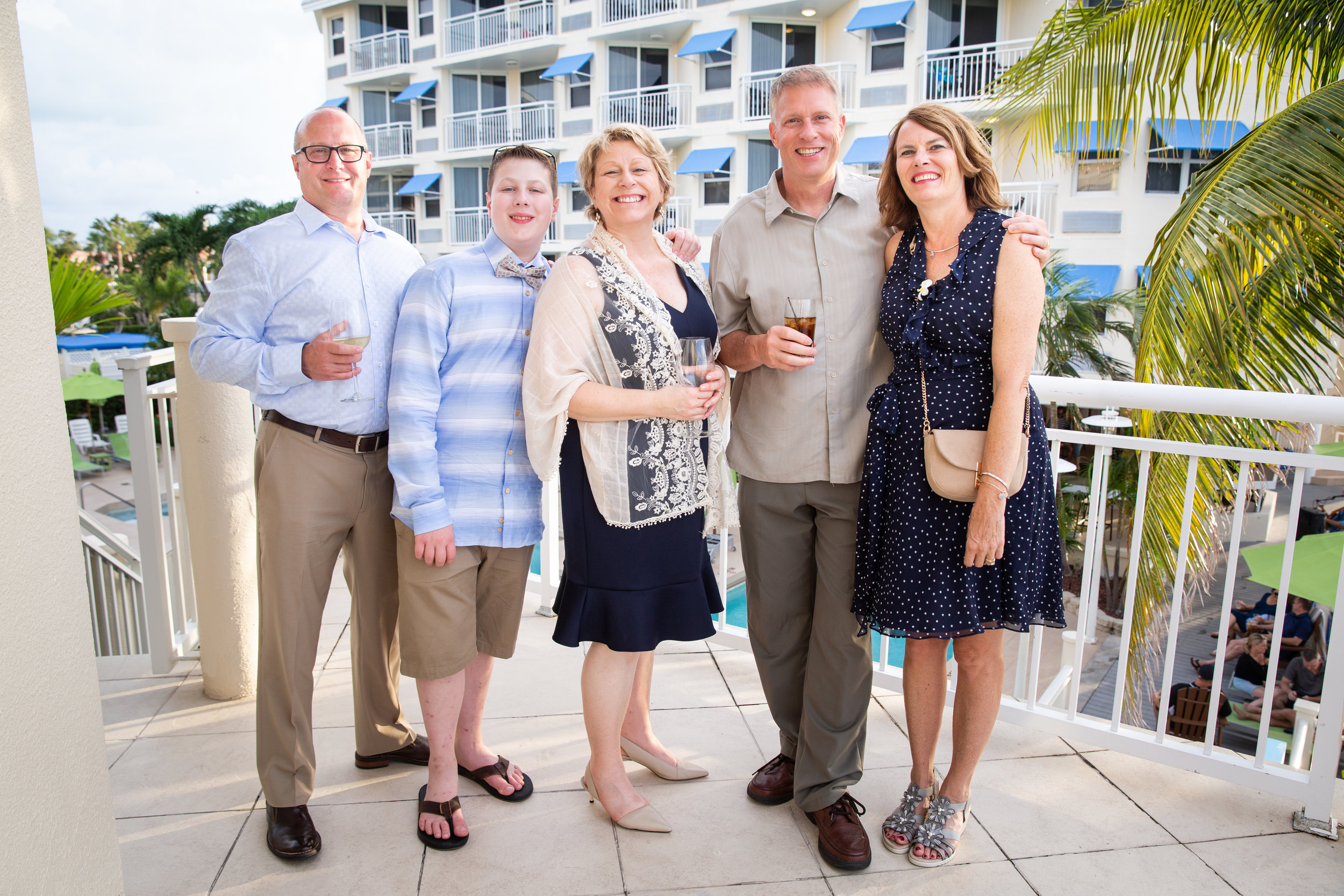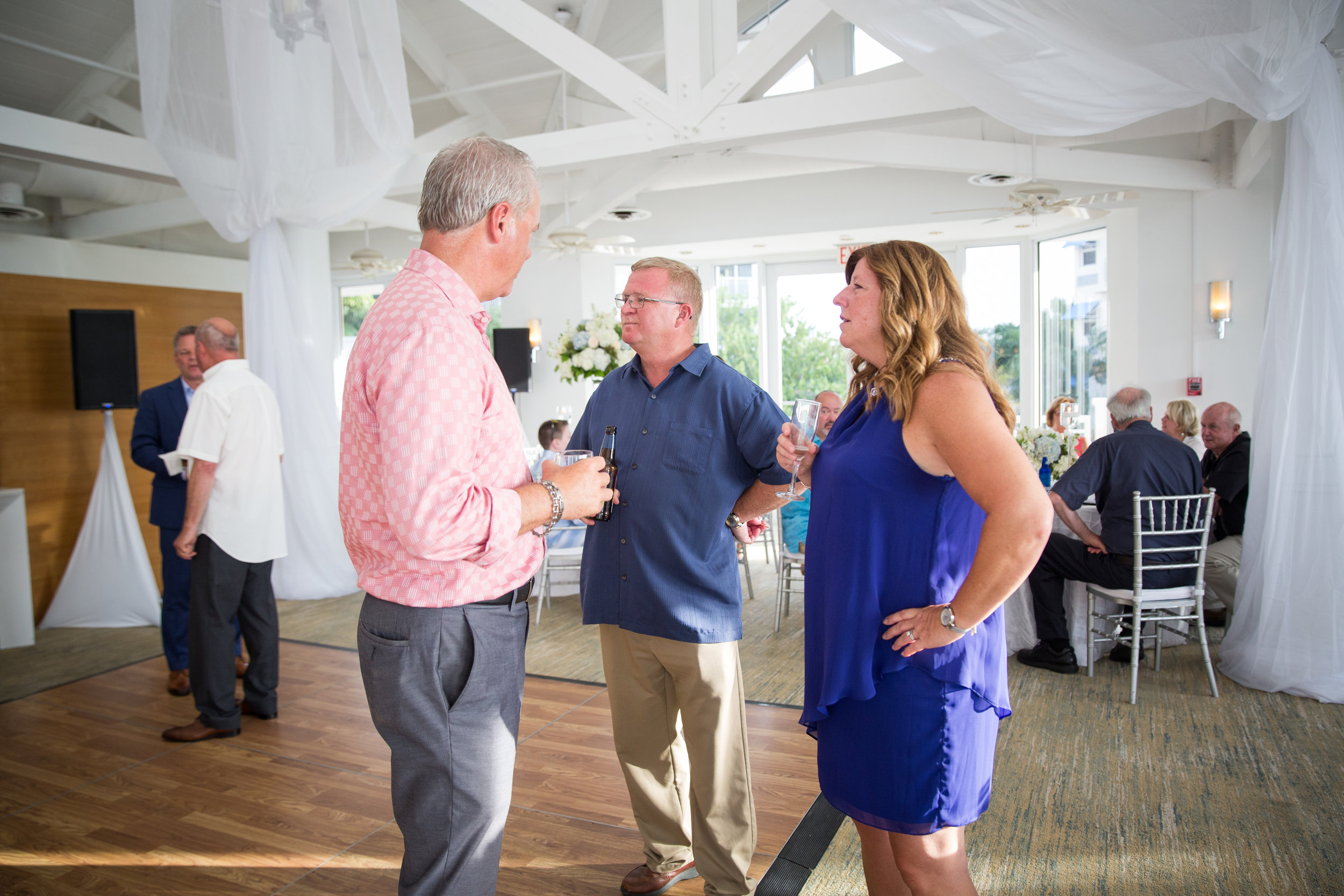What's the Difference Between A Photo Assistant and a Second Shooter?
If you’re in the process of researching photographers for your wedding, you have probably come across the options for “Photo Assistant”, and “Second Shooter”, and you may be wondering what the differences are, and do you need to worry about booking one or the other?
There are times I know my weddings will need a Second Shooter, there are times when it can be covered by just my Assistant and myself, there are times I shoot solo, and heck, there are even times when I Second Shoot for other photographers as well.
A Photo Assistant holds up the Bride’s veil, while the Photographer composes the shot….but who took THIS photo? The Second Shooter! ©Pedro de Sousa
So let’s dive in and figure out what’s what.
Photography Assistant
A person who, well….assists!….the person handing the…um….photography!
While often mistaken as the “second photographer” as a convenient label, the Photo Assistant (or simply, “Assistant”)’s job on the wedding day is extremely varied, but
essentially boils down to one critical goal:
Make the Photographer’s Job Easier so She Can Get Better Photos!
© Brooke Larke
This includes administrative tasks like:
Keep track of the schedule
Park the car
Dig out the snacks
Help navigate to the venue
Run wedding-day errands
It also includes tasks for the Client / Couple
Bring them water
Hide the bride from being seen by family/the groom
Hold items for the bride
Supply relief with random emergencies like a hem repair, loose hair tendril, or broken high heel.
Find the planner/florist/DJ to relay a message
©Chris Atomic
© Thomas William
When it comes to the creation of the actual photos themselves, the Assistant might simply be on hand to make sure they look as good as possible:
Fluff the train of the dress before a picture
“Throw” the veil for an epic wind shot
Be an extra set of eyes to watch for things like flyaway hairs, sunglasses, crooked necklaces, distractions in background, etc
Hold off-camera flashes and watch for the photographer to request adjustments
Bring out a reflector to fill in shadows where needed
Ask hotel staff to step out of the background
Hold back passers-by to give the photographer a few seconds to get the shot
Watch for traffic when the photographer must shoot in the road
The role deals a lot with gear, equipment, and just generally keeping track of things and people:
Prep the gear (clean dust and smudges)
Retrieve lenses for the next scene
Deliver fresh batteries and SD cards when needed
Check photo requests that were completed, and help keep family members on deck so that group photos run smoothly
Keep track of all the equipment (even when the photographer leaves a trail of lens caps in her wake)
But, does an Assistant also shoot?
Want the short answer? I’ve got three words:
Sometimes • Always • Never
Want the long answer?
Well, it really just depends. Again, the Photo Assistant is there to Assist the Photographer. If the photographer feels that there is a moment where having the assistant shoot the ceremony entrance from a second angle would make her job easier by not requiring her to move around too much, then she may ask the Assistant to do that.
If the Photographer can easily cover both the wide and the close-up with one camera, and feels the Assistant’s efforts would be better spent keeping the onlookers out of the background, then she may ask him to do that instead.
There are weddings where my Assistant backup-shoots with me the majority of the day, because the locations are cramped or I’m on a short timeline, or something like that. Then there are weddings where my Assistant only picks up a camera during the ceremony, out of respect for the service and not wanting to be a distraction running all over the church getting different angles, or during the Reception so I can take 15 minutes to eat without missing any of the dance floor action. And there are weddings that my Assistant never shoots a single photo the whole day….usually these are shorter days or with smaller groups and I have enough control over the logistics and surroundings that I really don’t need any backup.
But either way, the point is,
my Assistant is there for me, and sticks by my side the entire day.
Second Shooter / Second Photographer
A photographer who covers the wedding day - either in whole or in part - independently of the primary photographer
Where the Assistant is there to serve the Primary Photographer, the Second Shooter’s role
boils down to one main priority:
Shoot Parts of the Day that would otherwise be impossible for the primary photographer to capture
© Tang Nguyen
Defining the role of a Second Shooter is easiest to do in comparison to how the role differs from that of a Photo Assistant:
Unlike an Assistant who remains with the Primary Photographer the entire day, the Second Shooter works off her own schedule for the day. It will inevitably overlap at certain points like the ceremony, toasts, and grand exit, but for the most part a Second is on her own mission that day.
© Angelo Lopez
Further, while an Assistant typically ONLY works for their Photographer and no one else, a Second Shooter may shoot for many Primary photographers.
They work more on a freelance basis, and while they typically will rotate within the same few studios as needed, they are not necessarily required to be exclusive (this obviously varies depending on the studio….husband/wife teams, for example, will rarely separate and second-shoot for other studios, but generally speaking, a Second will be just as comfortable with Studio ABC this week, and Studio XYZ next week).
From a legal standpoint, where photos taken by Assistants will fall under the training and direction of their Primary photographer, using the Primary photographer’s equipment and thus providing a defacto copyright under the studio’s name, a Second Shooter is actually a dedicated professional photographer in his/her own right, with their own style, equipment, and identity. As such, they officially must yield their copyrights to the hired studio, by way of a Second Shooter Contract with the Primary Photographer. This prevents your Second Shooter from publishing images of you without your or the Primary photographer’s knowledge or consent.
Seconds are also unique in their way of seeing things, so they are chosen for specific jobs based on the requirements of that venue or the wishes of that client, based on their particular set of skills.
© Jakob Owens
They also maintain their own separate clientele, often have their own photography businesses - wedding or otherwise - and so are in their own right, working, high-quality, classically-trained, professional photographers.
Photo Credit: Sunny Au8ust
Okay great, but how does their day differ?
The Primary captures the Bride getting ready at her mom’s house.
While the Assistant would be holding the reflector to get the best lighting,
the Second captures the Groom getting ready at the hotel across town
Primary shoots the Family Formals.
While the Assistant would be checking the list of groups to ensure no one gets missed,
the Second shoots the Cocktail hour
Primary shoots the Maid of Honor giving the toast.
While the Assistant adjusts the flash and grabs a few photos from a different angle,
the Second shoots the Guest reactions
Primary takes the Couple for Sunset photos.
While the Assistant tosses the veil “on 3” for a dramatic shot,
the Second hops aboard the Trolley to document the guests’ tour around the island
If you’re wondering,
“But Couldn’t the Photo Assistant Just Do Both?”
it’s important to make the distinction between where an Assistant would be in relation to the Second, like so:
The Assistant might backup shoot the bridal party walking down the aisle, getting wide shots of them approaching toward the altar whereas the Primary will get close-ups of the same moments; the Second would instead remain with the Bride the whole time, get those nerves and tears with her father just before she walks down, and get the images from behind as she approaches the ceremony.
The Assistant might be asked to shoot the girls getting their hair and makeup while the Primary is also in the getting ready room shooting pictures of the rings and details; the Second would instead be driving the groom and his guys down to the beach to get some candid moments of them before the ceremony.
The Assistant could grab a few candids of the dance floor while the Primary is having dinner; the Second would be set up with a tripod on the beach, shooting a time lapse of the venue and the glow of the party.
Again, the Assistant’s Job is to make the Primary Photographer’s job easier, not necessarily to take more photos, but when they DO take photos, they’re just backing up the Primary photographer and shooting in the same space and getting the same moments.
The Second’s Job IS to take more photos, and to take photos that the Primary Photographer is (for the most part) NOT taking.
So you might wonder,
“How Do I Know if My Wedding Requires a Second Shooter?”
Most of the time, your Photographer will be the one to highlight that the coverage of the day that you’re seeking is going to require a Second dedicated Photographer, and will quote you accordingly for the cost to add one. But to give you some general guidelines, you may want to consider one if your wedding day will include any of these:
Activities happening concurrently throughout the day, with little chance that the Primary photographer could split her time between them.
To borrow the examples used above…if you and your fiance are getting ready in the same hotel, there’s usually no reason that the primary photographer can’t pop over to the boy’s room and come back in a timely manner during the getting ready photos. However, if you’re getting ready in different locations, it might not be practical
Large Bridal Parties, or Bridal Parties that will require separate coverage at the same time
If you have 3 on each side and just want some quick groupings at the hotel before you head to the ceremony, that’s easy for one photographer to handle. But, if you’ve got 6 to 8 on each side, and let’s say you want photos of the girls jumping on the bed in their matching robes, followed by pictures on the balcony, and you also want the boys’ photos to include shots of them around the pool before they get ready, then images outside Sloppy Joe’s as they make their way to the ceremony, that’s when you’er going to need a Second.
Your Schedule won’t allow you to attend your Cocktail Hour / Trolley Ride / Other Activity, but you want it documented
This usually happens when couples decide to wait to see each other when they walk down the aisle, and they opt to not have a “First Look” which would allow them to get some of the more posed and formal photos out of the way before the ceremony. If you decide to wait until after the ceremony to take all of your Family groups, Bridal Party photos, and the photos of you and your new spouse together, then you’re likely not going to have time to attend cocktail hour, which means your Primary Photographer will not be there either. In this situation, it’s valuable to have a Second who can attend and document Cocktail hour while you’re getting other more official photos taken.
Your Ceremony venue is very restrictive on photographers’ movements and where they can shoot from
We don’t see this so much in the Keys because most venues are very casual, but there are some religious buildings where strict rules are in place, and as a professional, your photographer will be keen to abide by them. In cases where the venue doesn’t want your photographer to move around, they will often settle for having a second photographer in a similarly stationary spot.
© Soragrit Wongsa
You Want to infuse short video clips or a unique medium into your photos
There are a lot of Second Shooters nowadays who specialize in Film photography, Medium-Format black and white photography, Infrared photography, and Polaroid images. There are also studios who offer “fusion” films….essentially a combination of short video clips and a slideshow of digital images set to music, in place of a full feature (and often more expensive) wedding film.
Because these require specialized equipment, editing, and deliverables, and often a whole second set of lenses and accessories, it’s not always practical for the Primary photographer to try to shoot the usual wedding coverage + these specialized styles. In these cases, it’s a good idea to have a Second Photographer on board.
In short, it’s good to be aware of the differences between Photo Assistants, and Second Shooters, so that you know what you’re buying when you book your photographer, you understand what their capabilities are, where their responsibilities fit into your overall wedding day, and the limitations of what they can do for you.
When you book your wedding with us for more than 4 hours, you always get a Photo Assistant included in the price of the package. He or She is there to help me get the best possible photos of your day, whether that means holding a light, keeping me from passing out by bringing me a cold water, tossing rose petals into the air so I can get a cool shot from underneath, or me handing her a camera to grab some shots from the other side of the ceremony. She’s there at my request, and stays by my side.
Photo Credit: Jakob Owens
But for those who want or need it, adding a dedicated Second Shooter is always an option, and it can be just for specific portions of the day, or full coverage start to finish. When you get your photography timeline from me, you’ll get one that shows what I’ll be covering, and one that shows what the Second Photographer will be covering. My assistant with be there to help both me and you, and the Second will be there to make sure no auxiliary moments get overlooked.
In other words, when the groomsman steps on the bridesmaids’ dress and rips the rear panel of fabric off as everyone chuckles and she dances down the aisle holding her skirt, the Second will keep shooting, while the Photo Assistant runs to help her!















